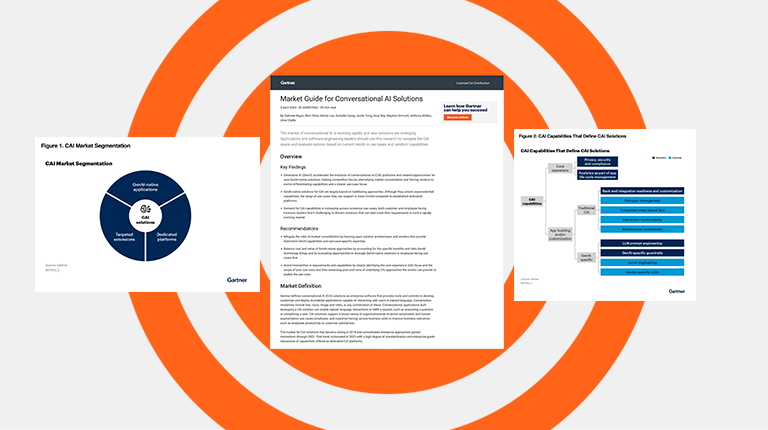When it comes to customer care, machine learning enables Intelligent Virtual Assistant solutions to automate tasks that used to require a live agent: password resets; address and complex information collection, and even sales support.
Integrating machine learning into enterprise customer care opens doors to more flexible automated solutions. It also frees up live agents to focus on handling complex or revenue-generating tasks. With the growing challenges and volume of customer interactions that most companies’ must handle, that flexibility, efficiency, and accuracy is exactly what’s needed. With a little help and vetting from the IT department, the contact center can take enterprise customer care to the next level.
Success comes with a cost. The bigger a company gets, the more complex its technology challenges become. And one of the biggest challenges for large enterprises is improving customer service. Handling a growing influx of questions, requests and tasks requires considerable manpower. Fortunately, there is a technology-driven solution that can easily and efficiently supplement customer service manpower: machine learning.
The algorithms that teach computers to complete actions humans do every day are taking over the future of enterprise customer care. A recent Harvard Business Review article noted that companies integrating machine learning into business processes are seeing both top line and bottom line performance improvements. The authors of the article observed that, “powerful machine-learning algorithms…are driving changes in businesses that would have been impossible to imagine just five years ago.”
Expanding the capabilities of machine learning has been made possible by a massive increase in data available to speech and language scientists over the past few years. In the customer care industry, this translates to tremendous improvements in self-service accuracy and understanding, advancements that both decrease costs and improve customer service.
Here are three ways machine learning is driving the future of enterprise customer care.
1. Increased Speed and Efficiency
Forrester Research reports that nearly 80 percent of U.S. adults say that valuing a customer’s time is the most important thing for providing good service. Every misrouted call and every IVR that forces a user to think and talk like a machine erodes the customer’s trust in your service.
With today’s automated customer care solutions it is possible to go beyond simple routing – and dealing with misroutes – to gain a deeper level of understanding. With machine learning, conversational solutions give customers the opportunity to speak in their own words.
By incorporating natural language processing, many of today’s automated customer care solutions can more accurately understand what callers are saying. While solutions based on human-programmed rules have been used for a long time, machine learning has enabled a more effective level of understanding about the caller intent than previously possible.
2. Expanded Service through Continuous Improvement
One of the primary benefits of machine learning is that a high volume of customer interactions can be a good thing. Think about how many customers your team interacts with each day. The more data that is captured and analyzed, the more teaching material is available to fine tune algorithms so they’re more accurate. And while training a machine learning model does incur its own costs, it is much less time intensive – and less costly – than training a live agent.
In the past few decades, we’ve seen a massive scalability of data. With machine learning, enterprises have another way to apply this information to improve customer care. Algorithms are only as good as the data that is fed to them, and the sheer volume of information they contain allows for much more accurate predictions of what customers require when interacting with Virtual Assistants. This will require a commitment to ongoing training and continuous tuning. However, that effort is worth the payback: increased accuracy, higher efficiency, and more satisfied customers.
3. Improved Personalization through Better Understanding
This jump in automated understanding opens the door for greater personalization. Nearly 75 percent of consumers prefer to resolve an issue through self-service. However, that doesn’t mean organizations can overlook the importance of personalization. When a company incorporates what is known about the caller from past interactions, that data can be used to personalize the customer experience to more quickly and accurately resolve the caller’s issue. This type of data can even allow for more predictive experiences, which, when done correctly, further reduce customer effort.




